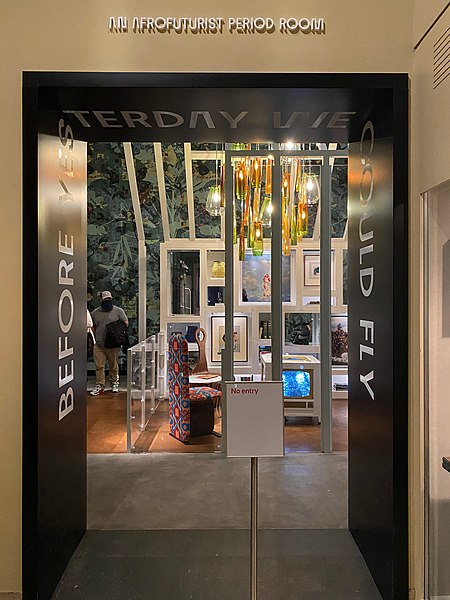Before Yesterday We Could Fly
Before Yesterday We Could Fly: An Afrofuturist Period Room is an art exhibition at the Metropolitan Museum of Art in New York City. The exhibit, which opened on November 5, 2021, uses a period room format of installation to envision the past, present, and future home of someone who lived in Seneca Village, a largely African American settlement which was destroyed to make way for the construction of Central Park in the mid-1800s.
Met Afrofuturist period room, December 2021
A rubber hair comb in the exhibit, evoking another comb uncovered during the Seneca Village Project.
The exhibit as viewed from the "living room" side
Vernus 3 by Ini Archibong in Before Yesterday We Could Fly
Seneca Village was a 19th-century settlement of mostly African American landowners in the borough of Manhattan in New York City, within what would become present-day Central Park. The settlement was located near the current Upper West Side neighbourhood, approximately bounded by Central Park West and the axes of 82nd Street, 89th Street, and Seventh Avenue, had they been constructed through the park.
Seneca's Morals, 1817, American edition, first book published by Harper. Letter 47 may have influenced the naming of Seneca Village.
All Angels' Church in 1887, after the church building was physically relocated.
Blockhouse No. 1, a structure that predated Central Park
Maritcha Remond Lyons came from a family owning property in Seneca Village.








